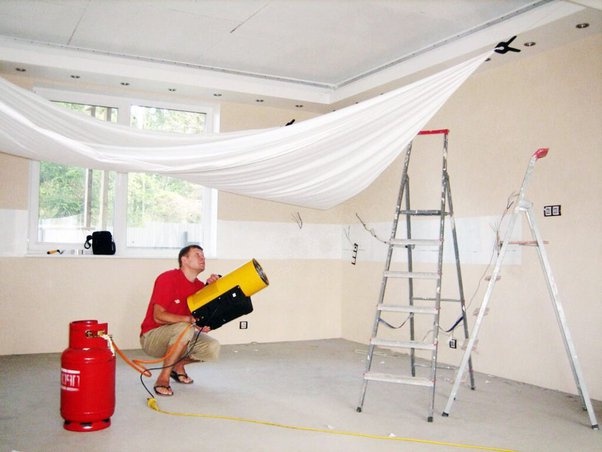In today's environmentally conscious world, sustainable design practices are becoming increasingly important across various industries. One such area where sustainability is gaining traction is in interior design and construction, with a focus on eco-friendly materials and processes. Stretch ceilings, a modern alternative to traditional ceiling finishes, have emerged as a sustainable solution for both residential and commercial spaces. In this article, we will explore the sustainability aspects of stretch ceilings and highlight eco-friendly options available in the market.
Understanding Stretch Ceilings
Stretch ceilings are a type of suspended ceiling system that consists of a thin, lightweight membrane stretched across a frame and attached to the walls. This membrane is typically made of PVC (polyvinyl chloride) or polyester fabric, although other materials such as natural fibers and recycled content are also used in some cases. The membrane is stretched tightly to create a smooth and seamless surface, providing a sleek and contemporary look to the space.
Sustainability Benefits of Stretch Ceilings
Stretch ceilings offer several sustainability benefits compared to traditional ceiling finishes:
Resource Efficiency: Stretch ceilings require fewer materials compared to traditional finishes like drywall or plaster, reducing the overall resource consumption during manufacturing and installation. Additionally, many manufacturers offer options with recycled content, further minimizing the environmental impact.
Energy Efficiency:
Stretch ceilings can improve energy efficiency by providing better insulation and light reflectance properties. Certain materials used in stretch ceiling have high light reflectance, allowing for better distribution of natural and artificial light within the space, thus reducing the need for additional lighting fixtures and energy consumption.
Durability and Longevity:
Stretch ceilings are highly durable and resistant to moisture, mold, and mildew, resulting in a longer lifespan compared to traditional ceiling finishes. This longevity reduces the frequency of replacements, minimizing waste generation and the environmental footprint associated with disposal.
Low Maintenance:
Stretch ceilings are easy to clean and maintain, requiring minimal resources such as water and cleaning agents. This reduces the environmental impact associated with maintenance activities over the lifecycle of the ceiling.
Recyclability:
Certain types of stretch ceiling materials, such as PVC, can be recycled at the end of their lifecycle, contributing to a circular economy and reducing landfill waste.
Eco-Friendly Options in Stretch Ceilings
As the demand for sustainable building materials grows, manufacturers are offering eco-friendly options in stretch ceilings to meet the needs of environmentally conscious consumers. Some of these options include:
Recycled Content:
Many manufacturers offer stretch ceiling materials with recycled content, such as recycled PVC or polyester fabric. These materials help reduce the demand for virgin resources and minimize waste generation.
Bio-Based Materials:
Some companies are exploring the use of bio-based materials derived from renewable sources, such as plant-based polymers, in stretch ceiling production. These materials have a lower environmental impact compared to petroleum-based alternatives.
Low VOC (Volatile Organic Compound) Formulations:
VOCs are harmful chemicals emitted by certain building materials that can negatively impact indoor air quality and human health. Eco-friendly stretch ceiling options include low VOC formulations that minimize emissions and promote healthier indoor environments.
Energy-Efficient Designs:
Certain stretch ceiling designs incorporate energy-efficient features such as integrated LED lighting systems or acoustic panels, further enhancing the sustainability profile of the product.
Certifications and Standards:
Look for stretch ceiling products that are certified by third-party organizations such as LEED (Leadership in Energy and Environmental Design) or GREENGUARD for their environmental performance. These certifications ensure that the products meet stringent sustainability criteria and adhere to industry standards.
Conclusion
Stretch ceilings offer a sustainable alternative to traditional ceiling finishes, with benefits ranging from resource efficiency and energy savings to durability and recyclability. By choosing eco-friendly options in stretch ceilings, consumers can contribute to reducing their environmental footprint while creating stylish and functional interior spaces. As the demand for sustainable building materials continues to rise, manufacturers are innovating and expanding their product offerings to meet the needs of environmentally conscious consumers, making stretch ceilings an increasingly viable choice for sustainable interior design.
FAQs (Frequently Asked Questions) About Stretch Ceilings:
What are stretch ceilings made of?
Stretch ceilings are typically made of PVC (polyvinyl chloride) or polyester fabric. However, there are also options available that utilize natural fibers, recycled content, or bio-based materials derived from renewable sources. These materials are stretched tightly across a frame to create a smooth and seamless ceiling surface.
Are stretch ceilings environmentally friendly?
Yes, stretch ceilings offer several sustainability benefits compared to traditional ceiling finishes. They require fewer materials, have high energy efficiency due to better insulation and light reflectance properties, are highly durable, and can be recycled at the end of their lifecycle. Additionally, eco-friendly options such as recycled content, low VOC formulations, and certifications from third-party organizations further enhance their environmental profile.
How long do stretch ceilings last?
Stretch ceilings are highly durable and resistant to moisture, mold, and mildew, resulting in a longer lifespan compared to traditional ceiling finishes. With proper maintenance and care, stretch ceilings can last for many years, reducing the frequency of replacements and minimizing waste generation.
Are stretch ceilings easy to install and maintain?
Yes, stretch ceilings are relatively easy to install and require minimal maintenance. The installation process involves stretching the membrane tightly across a frame and attaching it to the walls, which can be done by professionals. Once installed, stretch ceilings are easy to clean and maintain, requiring minimal resources such as water and cleaning agents.
Can stretch ceilings be customized to fit different spaces?
Yes, stretch ceilings can be customized to fit a wide range of spaces, including residential, commercial, and industrial settings. They are available in various colors, textures, and finishes, allowing for endless design possibilities. Additionally, stretch ceilings can be easily integrated with other elements such as lighting fixtures, acoustic panels, and ventilation systems to meet specific design requirements and functional needs.


No comments yet